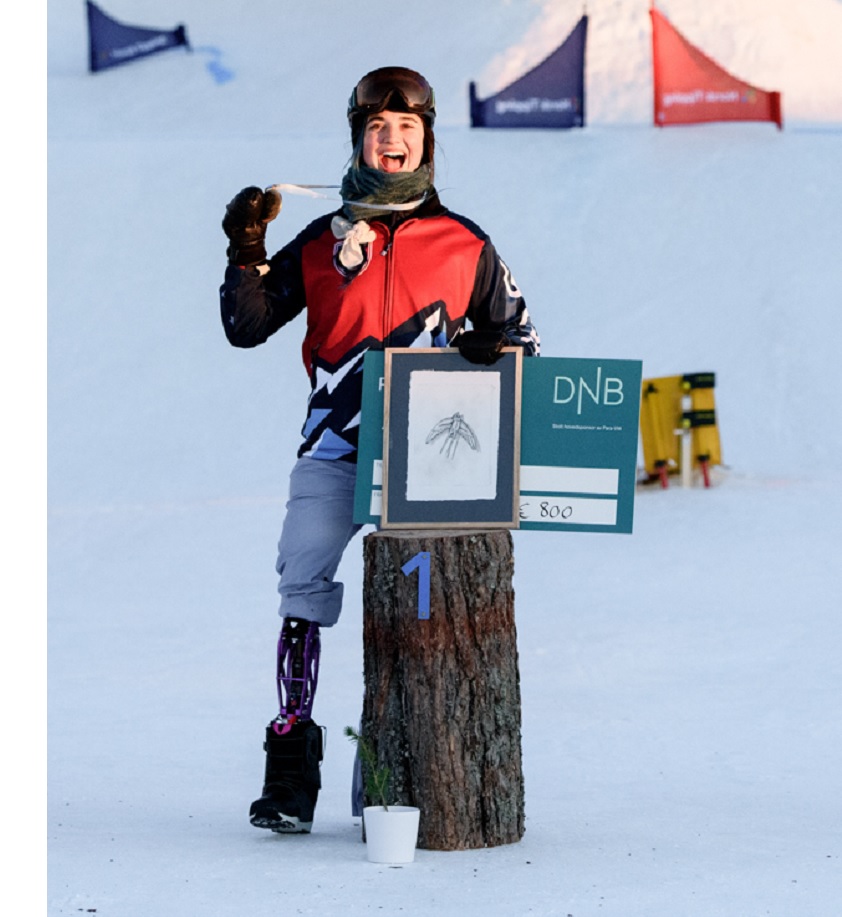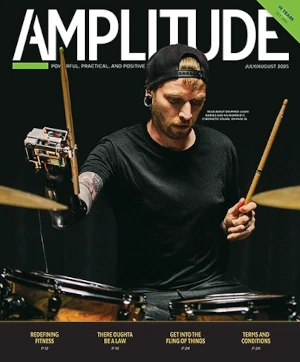The first thing we asked Brenna Huckaby was: Why is this the year you decided to climb a 20,000-foot mountain to raise money for amputee mobility?

We had to ask, because Huckaby has already scaled a decades’ worth of peaks in 2022, figuratively speaking. New Year’s Day found her in the midst of a David-vs-Goliath battle against the IPC, whose byzantine classification rules rendered Huckaby—a double gold medalist in snowboarding at the 2018 Games—ineligible for the ’22 Winter Paralympics. While that case was pending in court, her walking-around prosthesis broke just two days before she was due to fly to Europe for the World Championships. Huckaby made the trip anyway and won another gold (the fourth of her career) while continuing to trade blows with the IPC. She finally prevailed in that bruising fight and—despite being the only above-knee amputee in a field of below-knee competitors—won two more Paralympic snowboarding medals in Beijing, including another gold.
Phew. That all happened before March 15.
All she’s done since then is relocate to Montana with her husband and two young kids, a Herculean effort involving new housing, schools, child care, prosthetic services, etc. So when the Range of Motion Project called and invited Huckaby to join its climbing team on the annual fundraising ascent of Cotopaxi . . . . . why in the name of Andrew Parsons did she say yes?
Her answer says all you need to know about Huckaby’s commitment to people with limb loss and other disabilities. Read it below, and then please make a contribution to support ROMP’s mission of bringing mobility to all who need it. You can follow Huckaby on Instagram at @bren_hucks. Our conversation has been edited for length and clarity.
Given everything you’ve had on your plate this year, why did it seem like a good idea to add a climb up Cotopaxi?
That’s a good question. When ROMP reached out, at first I was a little hesitant because I’m not a hiker. If I’m gonna spend time in the mountains, it’s usually mountain biking or snowboarding. I don’t typically hike. But I decided to talk with them and see. And when I found about the mission of the climb and the mission of ROMP, I just felt really aligned to it. Because one of the reasons I actually hated hiking was because my prosthetic never fit comfortably enough to support me in the mountains.
Around the same time, I was getting a new socket made that was actually comfortable enough that it allowed me to hike. I had found this new prosthetist through an old teammate who backpacks, and she recommended him to me. So I was literally seeing the effects of being in a properly fitted prosthesis that allowed me to move without discomfort, and I thought everyone should have access to that. [The Cotopaxi climb] just felt so close to my own experience that I felt, “I have to do this.”
I think it will surprise a lot of people to hear that you’ve struggled with mobility. The general assumption is that as a Paralympic athlete and a fairly sought-after model, you must have a gold-plated health plan that covers all your prosthetic solutions.
I am very fortunate to have good health coverage. But with prosthetics, it doesn’t matter how much coverage you have, because they’re going to try and fight over how much you actually need. It took a whole year to get me into a fit where I wasn’t in excruciating pain. There’s no handbook to being an amputee. Nobody tells you, “Here are your rights.” It’s more like, “Here’s a prosthetist and they’re going to build a leg for you. Good luck.”
That’s pretty much the entire handbook right there.
Yeah, exactly. I’ve talked with a lot of other amputees, including other Paralympians, and we all struggle when prosthetists think they know more than us about how prosthetics are supposed to feel. The vast majority of above-knee amputees I’ve talked to have some sort of socket issue. So before I had this new socket made, I did a lot of research into who was building what kind of sockets.
This new socket is a HiFi socket, so it locks your femur in place a little bit more. I really liked the idea of that. And I was very lucky that this prosthetist who was recommended to me was in my state, within about an hour and a half drive. But even with that, you have to have the resources to drive an hour and a half each way, multiple times—and with gas prices right now, that’s a lot of money. I was also very fortunate that he was in my medical network.
Well okay, so now you’re leaping into this activity you haven’t had an opportunity to do a lot of before. Between relocating and parenting and everything else you have going on, do you actually have any time to log any miles on the trail and build up some endurance before you head down there?
I’ve been doing hikes I can take my kids on, because I have them all day. My oldest just started school last week, and my youngest starts daycare this week, so I’m hoping to drive up to Glacier [National Park] and do some bigger hikes. But even the smaller hikes I’ve done with my kiddos are more than I’ve ever done before. I think I have a mental advantage, because I’m going to keep up and do what I have to regardless of where my body’s at. I know how to push my limits enough to get to a finish line, so I’m not super worried about whether or not I can complete Cotopaxi. It’s more about how much effort I have to exert on that day. So we’ll see what happens. I’m just gonna dedicate the rest of September to mileage.
Have you talked to any other Paralympians or other adaptive athletes who’ve done this climb before? I’m thinking of people like Kirstie Ennis, Lacey Henderson, or Nicole ver Kuilen.
I talk to Lacey quite a bit. I haven’t actually asked her for specific pointers yet, but I probably will. But everyone says this is the best trip ever. Everyone seems to rave about this climb. I think it’s gonna be amazing.
Lacey was in a similar situation to you, where it was a last-second addition to her schedule. She didn’t have any time to train so she just said, “You know what? I’m finding a way.”
Yeah, it’s too short of a runway for me to really be able to train for this properly.
When you talk about the ability to fall back on a mental advantage, that calls to mind the test of wills you had to survive just to get the right to compete in Beijing. Does anything from that experience inform your interest in joining this climb?
Yes, this 100% aligns with the fight I’ve had in the last year. I’ve always been someone who speaks out about inclusion and equal access to opportunities. We’re just trying to live our lives, but unfortunately, because of the society we live in, living a normal life is like hard to come by. I’m tired of having to fight, and I’m sure other people are tired of having to fight, but it’s so much easier to fight together. This last year for me was a very lonely fight. So by going down to Cotopaxi, I’m really excited to join hands with other people to fight together and ideally, create opportunity and inclusion for people who have even less access than we do.
As a woman and as a person with a disability, a value I hold very strongly is that a win for one is a win for all. The more we can raise others up, we’re ultimately raising ourselves up as well. If you can help raise someone else up, ultimately you’re raising yourself up. I don’t live in Ecuador, so it would be easy to say this isn’t benefiting me directly. But it’s benefiting my community, and there’s a ripple effect that helps everyone. That’s just something that I live by.
What’s next for you after the climb? Are you are you preparing for another snowriding season? Are you giving yourself any time off?
Oh, I’m competing this year. I like to say that the next Paralympics (in 2026) are mine. My first Games (in 2018) I had a whole slew of things come up. The second Games, I had to fight the IPC to compete. The next one is my Games. I’m not getting pregnant during this cycle, so this is all to see how far I can go now. With the move [to Montana] and childcare and stuff, we haven’t quite figured everything out, so I’m taking a slight step back. I’m still competing this year; it’s just not going to be as intensive as it will be in the next three. But 2026 in Italy, that will by my Games.




